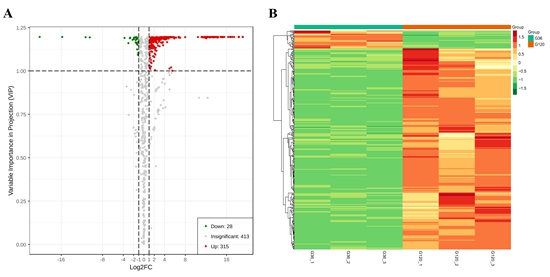The Tobacco Research Institute Revealed the Biochemical Mechanisms Involved in Antioxidant Activity and Phenolic Profile Changes during Chinese Wild Rice Germination
Recently, the tobacco functional components and comprehensive utilization innovation team of the Tobacco Research Institute (TRI) of the Chinese Academy of Agricultural Sciences systematically studied the accumulation rule of bioactive components in germinating Chinese wild rice (Zizania latifolia) and revealed the biochemical mechanism involved in antioxidant activity and phenolic profile changes during Chinese wild rice germination. The team created a theoretical foundation for the research and development of functional factors and functional foods for Chinese wild rice. The related research results were published in the journal of Food Chemistry.
According to Dr. Yan Ning, the co-corresponding author of this paper, Chinese wild rice seeds are considered a health-promoting food because they are rich in various bioactive compounds, including vitamins, minerals, phytosterols, g-oryzanol, and phenolic compounds. Chinese wild rice has antioxidant activity and various health benefits, such as alleviation of insulin resistance and lipotoxicity as well as anti-atherogenic effects. Moreover, germination can increase the content of many bioactive substances in grain seeds and play its potential health benefits. Through our previous research, it was found that the content of free, bound, and total phenolics declined first and then increased during Chinese wild rice germination. However, there is still lack of information on the dynamic changes in antioxidant activities, metabolites, phenolic acids, flavonoids, and phenolic biosynthetic genes in germinating Chinese wild rice.
In the latest research, we found DPPH radical and ABTS•+ radical cation scavenging activities of free, bound, and total phenolics initially declined and then increased during Chinese wild rice germination. Moreover, the variation in the content of p-hydroxybenzoic acid, p-hydroxybenzaldehyde, p-coumaric acid, vanillin, vanillic acid, ferulic acid, sinapic acid, epigallocatechin, and rutin was the main contributor to the antioxidant activity change during Chinese wild rice germination. The up-regulation of phenolic biosynthetic genes promoted the accumulation of phenolics in germinating Chinese wild rice. Moreover, the changes of phenolic biosynthesis enzyme activities (PAL, CHS, and CHI) were related to the changes of antioxidant activities during Chinese wild rice germination.
This work was supported by the Agricultural Science and Technology Innovation Program (Grant No. ASTIP-TRIC05), the Central Public-interest Scientific Institution Basal Research Fund (Grant Nos. 1610232018003 and 1610232019006), and the Science Foundation for Young Scholars of the Tobacco Research Institute of the Chinese Academy of Agricultural Sciences (Grant No. 2018A01).
More details are available in the link below:
http://www.sciencedirect.com/science/article/pii/S0308814620303459

Fig. 1. Differential metabolites in Chinese wild rice between the 36-h germination (G36) and 120-h germination (G120) stages
By Yan Ning (yanning@caas.cn)
-
 Apr 18, 2024Opening Ceremony of the Training Workshop on Wheat Head Scab Resistance Breeding and Pest Control in Africa Held in CAAS
Apr 18, 2024Opening Ceremony of the Training Workshop on Wheat Head Scab Resistance Breeding and Pest Control in Africa Held in CAAS -
 Apr 03, 2024IPPCAAS Co-organized the Training Workshop on Management and Application of Biopesticides in Nepal
Apr 03, 2024IPPCAAS Co-organized the Training Workshop on Management and Application of Biopesticides in Nepal -
 Mar 28, 2024Delegation from the School of Agriculture and Food Science of University College Dublin, Ireland Visit to IAS, CAAS
Mar 28, 2024Delegation from the School of Agriculture and Food Science of University College Dublin, Ireland Visit to IAS, CAAS -
 Mar 25, 2024Director of World Food Prize Foundation visited GSCAAS
Mar 25, 2024Director of World Food Prize Foundation visited GSCAAS -
 Mar 20, 2024Institute of Crop Sciences (ICS) and Syngenta Group Global Seeds Advance Collaborative Research in the Seed Industry
Mar 20, 2024Institute of Crop Sciences (ICS) and Syngenta Group Global Seeds Advance Collaborative Research in the Seed Industry
